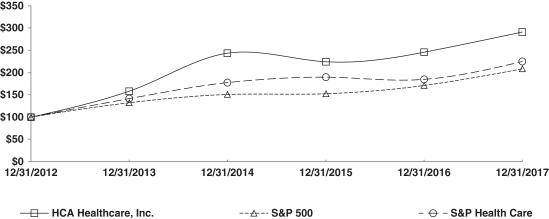services, (d) free training for a physician’s office staff in areas such as management techniques and laboratory techniques, (e) guarantees which provide, if the physician’s income fails to reach a predetermined level, the hospital will pay any portion of the remainder,(f) low-interest or interest-free loans, or loans which may be forgiven if a physician refers patients to the hospital, (g) payment of the costs of a physician’s travel and expenses for conferences, (h) coverage on the hospital’s group health insurance plans at an inappropriately low cost to the physician, (i) payment for services (which may include consultations at the hospital) which require few, if any, substantive duties by the physician, (j) purchasing goods or services from physicians at prices in excess of their fair market value, (k) rental of space in physician offices, at other than fair market value terms, by persons or entities to which physicians refer, and (l) physician-owned entities (frequently referred to as physician-owned distributorships or PODs) that derive revenue from selling, or arranging for the sale of, implantable medical devices ordered by their physician-owners for use on procedures that physician-owners perform on their own patients at hospitals or ASCs. The OIG has encouraged persons having information about hospitals who offer the above types of incentives to physicians to report such information to the OIG.
The OIG also issues “Special Advisory Bulletins” as a means of providing guidance to health care providers. These bulletins, along with the Special Fraud Alerts, have focused on certain arrangements that could be subject to heightened scrutiny by government enforcement authorities, including: (a) contractual joint venture arrangements and other joint venture arrangements between those in a position to refer business, such as physicians, and those providing items or services for which Medicare or Medicaid pays, and (b) certain “gainsharing” arrangements, i.e., the practice of giving physicians a share of any reduction in a hospital’s costs for patient care attributable in part to the physician’s efforts.
In addition to issuing Special Fraud Alerts and Special Advisory Bulletins, the OIG issues compliance program guidance for certain types of health care providers. The OIG guidance identifies a number of risk areas under federal fraud and abuse statutes and regulations. These areas of risk include compensation arrangements with physicians, recruitment arrangements with physicians and joint venture relationships with physicians.
As authorized by Congress, the OIG has published safe harbor regulations that outline categories of activities deemed protected from prosecution under the Anti-kickback Statute. Currently, there are statutory exceptions and safe harbors for various activities, including the following: certain investment interests, space rental, equipment rental, practitioner recruitment, personnel services and management contracts, sale of practice, referral services, warranties, discounts, employees, group purchasing organizations, waiver of beneficiary coinsurance and deductible amounts, managed care arrangements, obstetrical malpractice insurance subsidies, investments in group practices, freestanding surgery centers, ambulance replenishing, and referral agreements for specialty services.
The fact that conduct or a business arrangement does not fall within a safe harbor or is identified in a Special Fraud Alert, Special Advisory Bulletin or other guidance does not necessarily render the conduct or business arrangement illegal under the Anti-kickback Statute. However, such conduct and business arrangements may lead to increased scrutiny by government enforcement authorities.
We have a variety of financial relationships with physicians and others who either refer or influence the referral of patients to our hospitals, other health care facilities and employed physicians, including employment contracts, leases, medical director agreements and professional service agreements. We also have similar relationships with physicians and facilities to which patients are referred from our facilities and other providers. In addition, we provide financial incentives, including minimum revenue guarantees, to recruit physicians into the communities served by our hospitals. While we endeavor to comply with the applicable safe harbors, certain of our current arrangements, including joint ventures and financial relationships with physicians and other referral sources and persons and entities to which we refer patients, do not qualify for safe harbor protection.
Although we believe our arrangements with physicians and other referral sources and referral recipients have been structured to comply with current law and available interpretations, there can be no assurance
18
